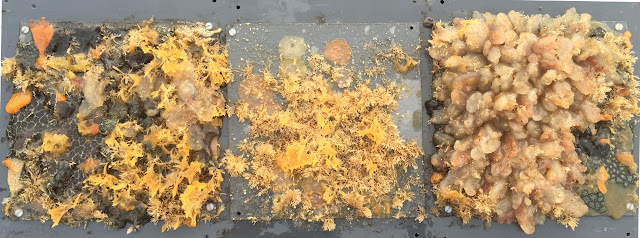(Former) fouling panel inhabitants "Ooh, it kind of looks like pasta salad! Maybe like a Mexican salad, you know, with black beans and yellow corn. It doesn't look appetizing though." My intern was standing over the lab bench, looking at a pile of ascidians and bryozoans I had just pulled off of a fouling panel. I gave her a sideways, confused look. Pasta salad, really? We had been working all day, pulling invertebrates off of fouling panels, leaving only strategically-chosen individuals behind. We were setting up an experiment in Eel Pond to parallel one we set up at the WHOI pier two weeks ago . For both experiments, we want to find out how the first species to settle on a fouling panel and dominate the community influences other species that might settle. I suspect that the first dominant species inhibits other organisms from recruiting to the panels, either by consuming their larvae, outcompeting them for food, altering the flow of water over the plate, o

